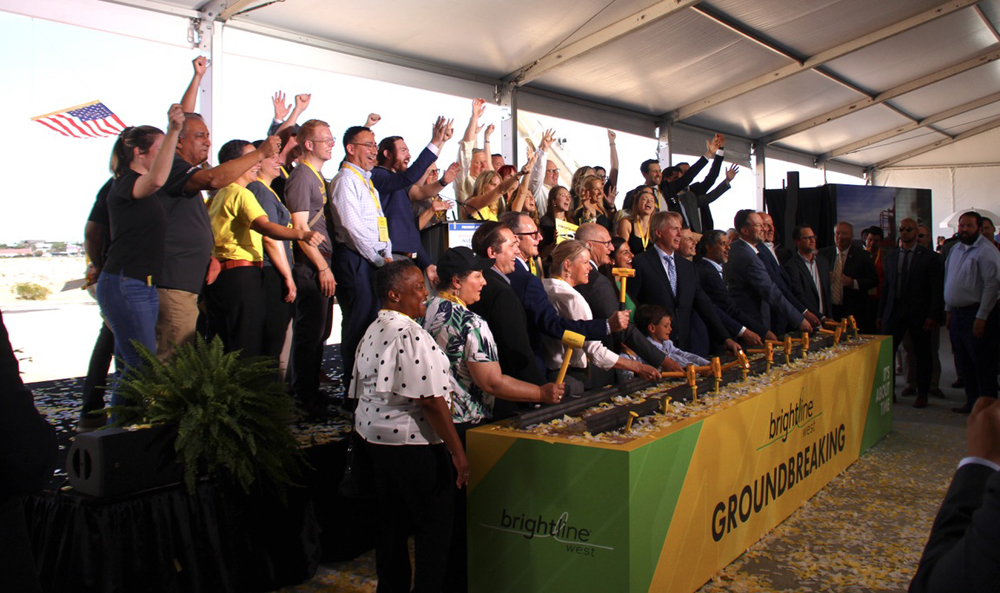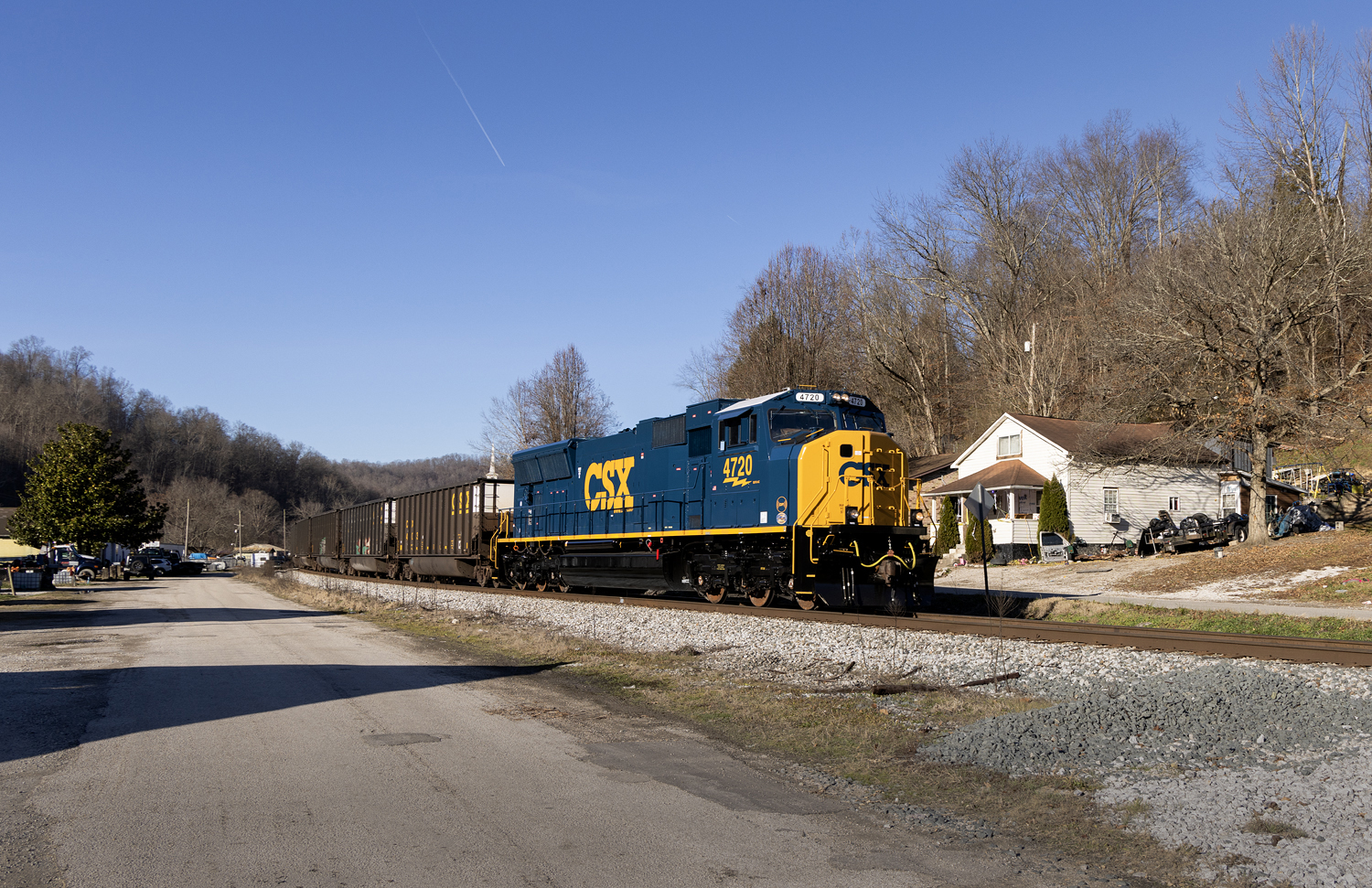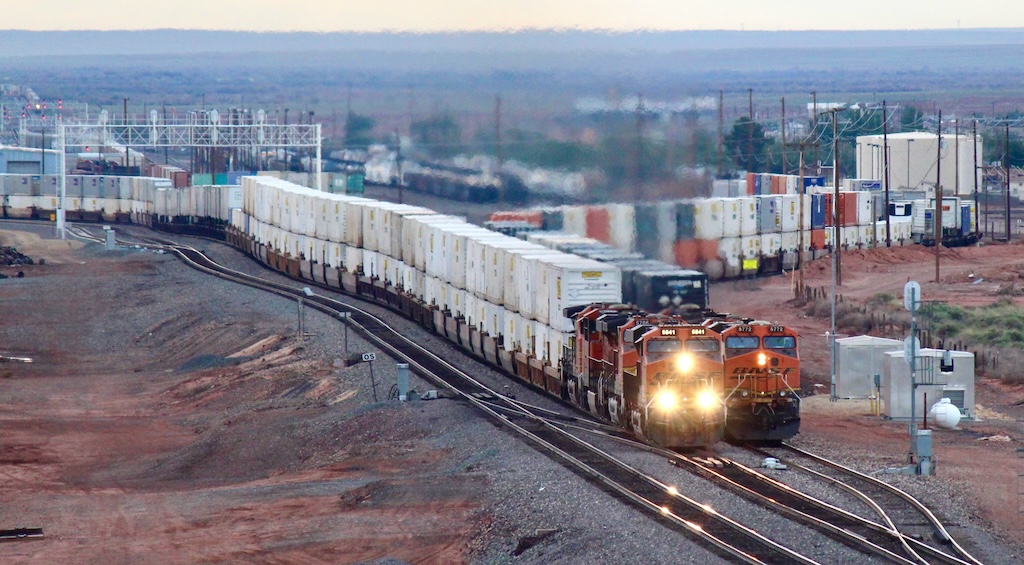
LAS VEGAS, Nev. — Trains News Wire has obtained an 1,160-page “Limited Remarketing Memorandum” issued earlier this month announcing the $1 billion availability of bonds by California and Nevada authorities. The financing is part of Brightline West’s quest to secure operating capital for its proposed 218-mile high speed venture between Las Vegas, Nev., and Southern California.
In addition to the necessary financial disclosures, the document released Aug. 1 also contains appendices estimating revenues, ridership and operating costs once service begins in 2028.
The California Infrastructure and Economic Development Bank issued $850 million and Nevada’s Business and Industry director issued $150 million of private activity bonds as Series 2020A-4. The proceeds of the sale are used to pay off holders of maturing 2020 bonds and raise more capital. The new bonds pay an interest rate of 8% (California) and 8.125% (Nevada) and are due to mature Jan. 1, 2050.
The $12 billion project secured federal authority to accept the financing instrument earlier this year [see “DOT awards Brightline West $2.5 billion …,” News Wire, Jan. 23, 2024 News Wire]. Issuance of those bonds will augment the California and Nevada bonds, as well as a $3 billion federal grant [see “Legislators say Brightline West will receive …,” News Wire, Dec. 5, 2023].
The project’s ceremonial groundbreaking was staged at its Las Vegas station site earlier this year [see “Brightline West groundbreaking hailed …,” News Wire, April 22, 2024], followed by the announcement that it had selected Siemens’ “American Pioneer 220” as its electrified trainset [see “Siemens to build …,” News Wire, May 1, 2024].
The memorandum says “Brightline West is in the process of arranging … $6 billion of project finance bank loans, with the remainder of the funding consisting tax-exempt private activity bonds, a portion of the proceeds of which are expected to refund the 2020-4 bonds. The company also expects to include tax-exempt debt and sponsor equity in the initial finance plan.”
Ridership and revenue estimates
Among the appendices presented was a “base case” analysis by the Steer consultancy that projects 47.3 million one-way trips between Southern California and Las Vegas in 2028, rising to 48.6 million by 2030. It predicts a 14% capture rate the first year, rising to 21% beginning in 2030.
The “captured” ridership translates to 6.7 million passengers in 2028 and 10.2 million riders in 2030, based on a complicated set of factors unique to the market, as well as the adoption trajectory of Brightline’s South Florida experience. However, an additional 1 million journeys by 2030 are projected to be “induced” trips that would not have been made if the high speed rail option didn’t exist.
Averaging estimated ticket revenue between the various destinations, according to the Steers study, would yield approximate farebox revenue in 2028 of $645 million at an $88 average fare, assuming one class of service. With higher ridership in 2030, revenue would rise to $1.040 billion.
Additional “ancillary” revenue totaling $265.7 million in 2030 is expected to come from food and beverage sales, commercial leasing, carbon credits, parking, and naming rights.
There is also a peaks-and-valleys bar graph showing how estimates were calculated by days of the week and hours in the day, with the biggest southbound demand — not surprisingly — occurring Sunday afternoon from Las Vegas.
Separate tables estimate “Operating and Maintenance” costs totaling $287.2 million in 2028, rising to $315.4 million in 2030. The study tested various frequencies, ranging from every 45 minutes to longer intervals; it isn’t likely that a single frequency scenario would make sense throughout the week or every day.
Perhaps this data should be put in a time capsule and trotted out once the trains start rolling.














Charles.
Using the cost of the California High Speed Rail Joke, Brightline West may get i or 2 miles of track built.
Paul,
Except for the High Speed Rail title, this project in no way is equivalent to the CA HSR project. They have a specific deadline for completion (summer 2028 in time for the LA Olympics), have permits in hand and, for the past seven months and continuing, are performing engineering soil testing along the ROW they will share with I-15. Contracts for design of train engines and cars have been issued and a concrete tie manufacturer is building a plant near the RR in Las Vegas. Four years is a very short period of time for this effort but they say they can do it so let’s watch and see if they can complete it in time.
Private Activity Bonds are a financial instrument that can be used by private companies to get certain kinds (usually large) of financing that can’t be acquired through the typical banks (w/o some sort of syndication involved).
Typically PAB’s are used for efforts that have a general public purpose and the entity wants to get a longer term. Therefore the state bonding authority reviews the request for qualification and the markets assign a 30 year bond rate.
The states have simply said, this offering meets the collateral, cash flow and creditworthiness required to certify that its a PAB.
Can someone explain to me what this means? Does it mean that the bonds are backed by the faith and credit of the two states?
The fact that Brightline is a private corporation doesn’t mean that its railroad is a free market enterprise. Our entire economy is based on corporate welfare.